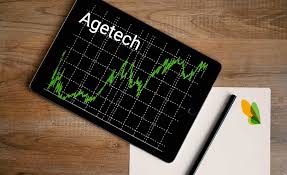Goal: meaningful connections, sharing caregiving responsibilities, and developing community-based solutions.
You are here
Fifteen years of AgeTech – the category remains – can a standard improve adoption?
 wants to drive creation of a standard for AgeTech. The global organization, long a player in the creation of standards across the spectrum of technology and engineering, has launched an ‘Activity’ called Technology Standards for the Aging (or AgeTech).The scope includes “terminology, human factors, usability, metrics, test methods, and interoperability for AgeTech products and services.” One possible output of this initiative is a certification of products or services that are in compliance with the standard. Many already associated with the AgeTech topic are participating in this initiative, which is comprised of meetings and online discussion over a two-year period.
wants to drive creation of a standard for AgeTech. The global organization, long a player in the creation of standards across the spectrum of technology and engineering, has launched an ‘Activity’ called Technology Standards for the Aging (or AgeTech).The scope includes “terminology, human factors, usability, metrics, test methods, and interoperability for AgeTech products and services.” One possible output of this initiative is a certification of products or services that are in compliance with the standard. Many already associated with the AgeTech topic are participating in this initiative, which is comprised of meetings and online discussion over a two-year period.
The term ‘AgeTech’ has morphed and more recently settled, at least in the US, at AARP. Its AgeTech Collaborative has offered a definition: “AgeTech is a category of technology solutions designed to meet the needs of the world’s aging population. These include products, services and experiences across industries that aim to make the process of aging easier.” The list of product and service categories considered to meet these needs span a range from health tech to robotics to Fintech and beyond.
The AgeTech category has come a long way in fifteen years. This website was launched in 2009, closing that year with a list of products that matter to help older adults ‘age in place’ for as long as they preferred. By 2009, 63% of older adults were online at least monthly, broadband adoption had grown to 30%, home automation had emerged, as well as caregiver portals, GPS locators, easy-to-use phones, touch screens and telehealth all were beginning to serve older adults as a market.
And yet, while trends were apparent, nearly every 2009 mentioned product is obsolete. Fifteen years ago, there was no awareness yet of voice technology or AI, and little was known in this pre-Covid era about telehealth. Most of the larger companies (Philips, GE) soon walked away from tech for older adults, possibly because it was too early to make a profit in the category. Would a standard applied to those products have improved their staying power? Today, will a standard applied to a large library of age-related offerings make them more likely to be useful, be usable, be adopted, and ‘help meet the needs of the world’s aging population?’ The goals, as always, are admirable, the AgeTech need today is well-understood as the oldest baby boomer approaches 80. If a quarter of older adults are likely to live alone in their later years, will they or their families seek AgeTech products to assist them? And if they seek, how will they find them?
